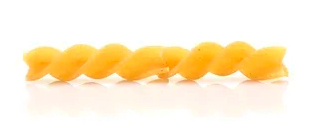In my introductory post about Factor V Leiden, I discussed how this is an inherited condition and relatively common affecting around 4% of people of European decent. In this post I will take you through some of the basics of clotting to help you understand why Factor V Leiden increases your risk of clots.
Factor V
Factor V Leiden is an abnormal form of the clotting factor, Factor V (five). To most people, this doesn’t mean much, so to understand why this problem causes thrombosis, you need some knowledge of how blood clots.
Over many years I have taught medical students and junior doctors about clotting, and many find it complicated and confusing. But if you take it slowly and look at how each step leads to the next, you will soon see that it is a fascinating, intricate process; it is almost miraculous. I point out to students that they may find clotting complex, but it is essential for life. If our blood didn’t clot, the human race would have bled out aeons ago.
Fibrin and fibrinogen

Clotting is easiest to understand if you start at the end of the clotting pathway. In our blood, we have a protein called fibrinogen, the building block of blood clots. Fibrinogen is an elongated protein like a short piece of string, with a twisted structure like a pasta spiral.
Blood clots are formed when another protein, thrombin, chops the ends off the fibrinogen spirals. The spirals then become sticky and join together to make long chains called fibrin. The chains crosslink with each other and make a net, which captures red and white cells in the blood and forms a clot. The image shows an electron microscope picture of a blood clot.
If you have had a DVT or PE, you can imagine that a net formed in your vein will stop the blood from flowing normally. The clot can ultimately block the vein completely.
Thrombin
If we work backwards up the pathway, the next question is; where does the thrombin come from to convert fibrinogen to fibrin?
When scientists started to study how blood clots, they thought there were only a few steps required to make thrombin, but over time it has become clear that many clotting factors are needed. More than twenty proteins are necessary to make blood clot normally. Each clotting protein initially had a name, but this complicated the pathway. It is now conventional to refer to each clotting factor by a number using Roman numerals. Factor V (five) is one of the key proteins.
How does Factor V work?
Factor V works by speeding up clotting. It is usually present in the blood in a resting inactive state. But when clotting starts, Factor V is switched on and acts like an accelerant. To understand this better, compare clotting to lighting a bonfire. Suppose you start a fire, but the wood is damp, and you can’t get it going. You create a lot of smoke, and it only smoulders. So you decide it will go much better if you pour on some petrol (Do not do this at home, very dangerous). Immediately the fire bursts into flames, and you end up with singed hair. Factor V is like the petrol. Clotting starts slowly and explodes to life when activated Factor V comes along.
Factor V is not the only clotting factor to act like petrol on the fire; another clotting factor, Factor VIII, also works by speeding up the clotting pathway. If you don’t have Factor V or Factor VIII, your blood takes much longer to clot than normal. Very few people lack Factor V (Factor V deficiency), an extremely rare condition. But Factor VIII deficiency is more common and better known as Haemophilia. People with haemophilia can bleed spontaneously, confirming how vital these clotting factors are to prevent bleeding.

Next Time
In the next post, I will explain how Factor V is controlled so it doesn’t keep pouring petrol on the fire!
Don’t miss the next post. Click on the red “Follow” button below and be sure to get notification when the next post is available



Leave a Reply